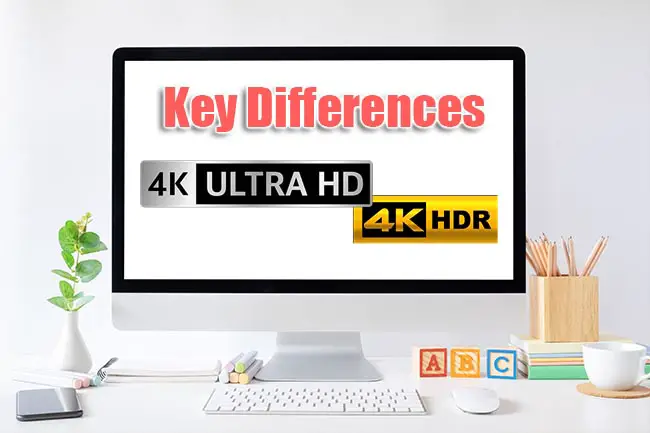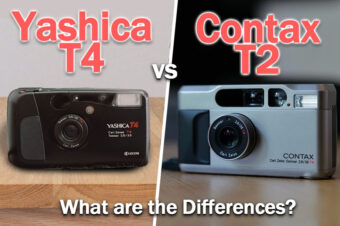The difference between 4K UHD vs 4K HDR is only apparent in very bright or dark tones, where 4K HDR is much better able to display details and to create a slightly higher quality image.
When comparing 4K vs HDR, 4K refers to a specific ultra high definition resolution, and means that your image is very sharp, while HDR refers to the ability of your screen to display higher contrast and increased detail in both the dark and bright areas.
If you’re looking to buy a laptop, monitor or particularly a 4K projector, you’ve probably come across terms like 4K UHD, FHD, 4K HDR, etc. with regards to the image resolution of the screen or picture.
The screen is not usually the highest priority while buying a laptop, so this detail can often go unnoticed. However, screen resolution is a crucial aspect of any display device, and as you use them on a daily basis, it’s definitely an area where a mistake can be costly.
It affects the viewing quality and the price point of the laptop. Depending on your use, one kind of resolution may suit you better than the other.
I have used many screens and projectors throughout my career, and have put that knowledge into this article, which contains a detailed comparison of 4K UHD vs 4K HDR resolutions, so that you can be clear on exactly which is best for you, and why.
Key Differences between 4K UHD and 4K HDR

You cannot directly compare 4K UHD and 4K HDR, as they are referring to different aspects of the display technology, but you can see the main difference between UHD and HDR below.
4K UHD
- A 4K UHD screen refers to an image resolution of 3840 columns of pixels and 2160 rows of pixels. It is commonly only referred to as 4K resolution in the tech world, because UHD screens are usually of 4K quality.
- 4K refers to the quality of the image on the screen, as determined by the resolution of the displayed image.
- 4K UHD has a very vivid color quality. This comes from the extremely high definition image. 4K doesn’t usually use color gamut technology for enhancing color.
- You perceive it as a better quality of color, but there is no increase in quality in 4K UHD. The increase in definition makes it seem like the quality of color has increased.
- When considering compatibility with external devices, you need both the source and display to be fully compatible with 4K content.
- 4K content can be found on streaming platforms like Netflix and Amazon Prime Video.
4K HDR
- 4K HDR refers to a screen with 3840 columns of pixels and 2160 rows of pixels that reflect the correct amount of luminosity and contrast in color.
- HDR technology is compatible with many kinds of resolutions, including 4K.
- 4K HDR vastly improves the quality of the image over standard 4K UHD. The definition and depth of the image are enhanced and the picture becomes more realistic.
- The enhanced color is due to the wide color gamut technology used in 4K HDR.
- It packs a much bigger visual punch. The color and contrast are radically improved and the definition of light and shadow is maximized.
- The accuracy of color and the highly superior contrast ratio set HDR apart from other technologies.
- In 4K HDR, there is more distance between white and black. This creates greater contrast without affecting the definition of bright and dark colors.
- HDR is available in many formats. However, the devices should be compatible with each other with respect to the source and display.
What is 4K UHD?

4K is the golden standard in image resolution currently. Although 6K and 8K are hot on its heels, and are available in a wide range of TVs, it’s unlikely that these resolutions will become widespread in projectors for at least another few years.
The exact image resolution is 3840 x 2160 pixels, which provides a wealth of details and is considered more than sufficient for most purposes, from casual movie watching to high-end photo editing.
Most professionals, like photographers and graphic designers, use 4K resolution as it provides vivid colors and superior image quality than FHD, which is the next step down from UHD in terms of resolution.
What is 4K HDR?

HDR is not a measure of image resolution, but is supplementary to it. High Dynamic Range (HDR) imaging is a method of creating a better range of luminosity than Standard Digital imaging, by enabling the device to display more detail in both the extreme whites and blacks.
4K HDR does not compete with 4K UHD in any way, because they are completely different things. The resolution of the screen actually doesn’t matter for 4K HDR. However, HDR scenes usually have 4K resolution.
What is 4K Resolution?
4K resolution has 4 times the number of pixels than Full HD (1080p). If you are used to Full HD, then you will see a massive jump in quality on switching to 4K, particularly when you compare Full HD short throw projectors to 4K short throw projectors.
4K is honestly an amazing resolution and fantastic for most purposes. HDR, on the other hand, does not have any relation to image resolution, but simply speaks to the overall contrast, luminosity and quality of the picture.
4K is not really needed for screen sizes below 15-inches, as it is very difficult to tell the difference between this and Full HD. But with much larger screens, such as 27-inch monitors or 100-inch projections, you definitely can see a higher image quality due to the larger number of pixels present.
Color and Contrast in HDR
Having an HDR screen means that you get a radically improved color and contrast in your image quality. HDR screens have a distinct set of color and brightness settings so that you can customize the viewing experience however you want.
The visual impact of HDR is far greater than SDR, which is found in all non-HDR displays. The colors are more accurate, the light appears smoother and the image is just more detailed in general.
HDR improves contrast by creating more distance between white and black. The contrast increases without affecting the exposure of bright or dark colors.
Choosing Between 4K UHD and 4K HDR
People often get confused when they see 4K UHD and 4K HDR labels on monitors of projectors, but you actually don’t need to choose between HDR vs UHD.
Both give you an excellent display that is far superior to that found in any Full HD devices, and it can often come down to personal choice which of 4K HDR vs 4K UHD you actually prefer.
Just remember that HDR results in an image with a greater dynamic range, meaning that both blacks and whites have more detail, although in practice there is not a huge distance between both UHD vs HDR standards.
Final Thoughts on 4K UHD vs HDR
Both UHD and HDR are important aspects of image quality, particularly if you are displaying a very dark image where it can otherwise be hard to make out details. But whether one needs them or not really depends on you.
Ideally, try to study each of them in-depth by visiting a store to get a real look at the differences, to help you decide whether you need them on a daily basis or not.
Remember that it is very important to evaluate your screen needs for devices like laptops or projectors, because you will most probably be looking at them every day, and this is not an area where you want to make a mistake.
FAQs
Is HDR Better than 4K?
HDR can be better than 4K for some uses, as HDR images show improved contrast and better definition in both the dark and light areas of your image. 4K is better where you need outright high resolution, such as for a larger screen, as this gives improved overall detail in the picture.
Is HDR 4K?
HDR is not 4K. HDR is a separate standard used to show higher contrast and bring detail out of dark and bright areas of the picture. 4K refers to the overall resolution, and essentially to the sharpness of the picture.
HDR10 vs 4K: What’s the Difference?
HDR10 is an open-source HDR format that is the most widespread of all HDR technologies. It refers to a bit-depth of 10 bits, plus specific color sub-sampling. 4K refers to the resolution of the monitor, with most 4K monitors supporting HDR10, meaning that you often don’t have to choose between them, and can get both in the same screen.
Read More:






2 Responses
Adam
Hey, Tim. Thanks for posting.
I noticed that in the 4K HDR section, you mention that “4K HDR refers to a screen with 3840 rows of pixels and 2160 columns of pixels…”
As with 4K UHD, did you mean “3840 columns of pixels and 2160 rows of pixels”?
Thanks
Tim Daniels
You’re right, Adam.
Thanks for pointing it out – corrected now!